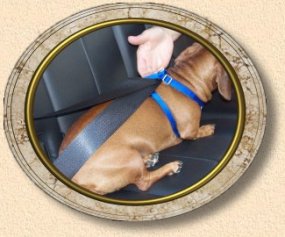The practice of pushing a pill down the back of the animal's throat should be avoided. Dr. De Grasse has found that a misalignment can occur with the forceful opening of the animal's mouth, the pushing of the pill as the animal turns its head and also as the animal may struggle in any way. There is very little force needed to cause an upper cervical (neck) misalignment and most animals do not appreciate an uninvited hand put into their mouth. An easier method would be to use a soft food product such as a liver paste. "Braunsweiger", a liverwurst product can be found in most grocery stores. It has a strong odor which helps the animal that has a "stuffed up nose" to smell it. It is very soft and pliable which allows the owner to mold the food product around the pill and to make a little "pill ball" which most animals will gladly swallow. Hard or very large pills can be crushed and large capsules can be opened and the medication can be put into the food material. Please note: banana, rice and cheese are food products that can cause constipation and should be avoided in the elderly, pregnant, sedentary and in any animal with a possible disk bulge.
 |
When traveling with an animal in a moving vehicle, it cannot be stressed enough to secure either the crate or the animal. Dr. De Grasse has had several animal patients that have broken their neck or spine either falling into the seat ahead of them or into the dashboard as the vehicle came to a sudden stop. There are several other animal patients that have gone through the windshield as the vehicles were involved in moderate impact accidents.
|
Stairs, whether carpeted or not, have been a source of falls for the animal. Child gates can be easily used to prevent the animal from having access to the stairway. Dr. De Grasse would like to caution the animal owner to consider the length of the animal's legs when allowing the animal to walk up and down the stairs, without assistance. For example, the short-legged dachshund may be able |
|
to climb the stairs when it is a young puppy but if you really watched the animal as he was climbing - you would notice that he is using his back as he "hops" up the stairs and is not able to truly use his legs because the length is too short as compared to the height of the step. As the animal approaches middle age, the flexibility of the back becomes compromised and evidence of disc narrowing can usually be seen upon the radiograph. As the deterioration of the disc continues there may be the development of a disc bulge which could lead to |
 |
partial or complete paralysis. In this example, a ramp could dramatically help the animal to navigate around without compromise to the disc. Or the animal could be carried up and down the stairs due to the small size. My point is that a little thought regarding the ability of the animal to climb stairs could prevent an unwanted spinal condition later. Again, prevention is easier and less expensive than corrective measures. |
|